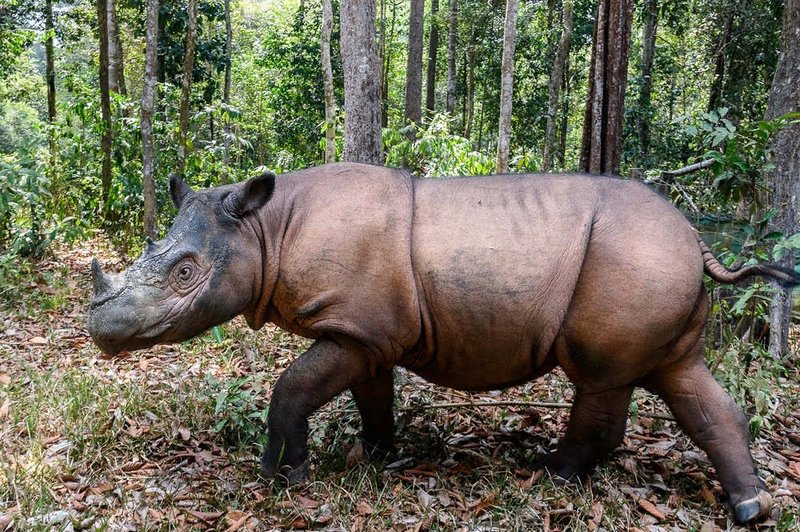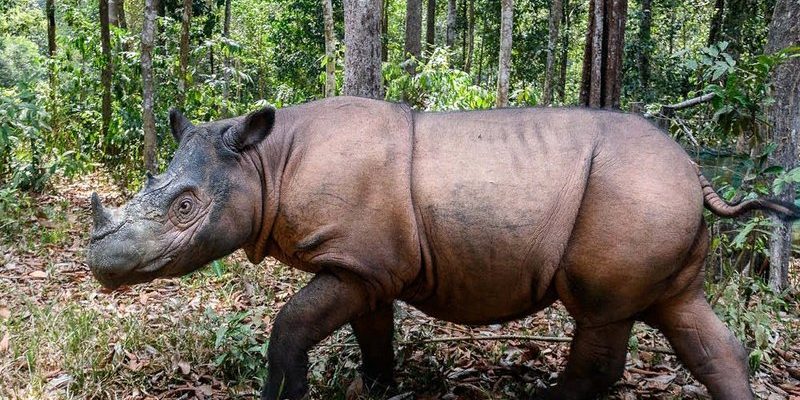
You might be wondering why such a creature is so important. The Sumatran rhino, the smallest of all living rhinos, thrives in tropical forests where it contributes to numerous ecological processes. As this species faces serious threats, understanding its role becomes crucial not just for conservationists but for anyone interested in nature’s intricate web. Let’s dive into the unique ways the Sumatran rhinoceros impacts its ecosystem.
Understanding the Sumatran Rhinoceros
The Sumatran rhinoceros, known scientifically as *Dicerorhinus sumatrensis*, is a unique member of the rhinoceros family. Unlike its larger cousins, the Sumatran rhino is smaller, standing about 4–5 feet tall and weighing between 500 to 1,000 pounds. It’s covered in a patchy coat of reddish-brown hair, which helps it blend into its lush environment. These animals are incredibly solitary by nature and prefer to roam the dense understory of tropical rainforests, where they find abundant food sources like leaves and fruits.
You might think of rhinos as just big herbivores, munching away on plants, but there’s much more to their story. Their foraging habits help shape their habitats. By feeding on various plants, Sumatran rhinos prevent any single species from overpowering others, ensuring a diverse and healthy ecosystem.
The Role of Seed Dispersal
One of the most vital roles the Sumatran rhinoceros plays in its ecosystem is as a seed disperser. When they munch on fruits, they consume seeds and later excrete them far from the parent plant. This process allows new plants to grow in different areas, promoting genetic diversity among plant species. It’s like a natural gardening service, helping to spread life across the jungle.
Without these rhinos, many plants may struggle to reproduce effectively. Imagine a garden where all the flowers are huddled in one corner—they’d compete for resources and suffer. This isn’t just a loss for plants; it can impact the entire food chain. Birds, insects, and even larger mammals depend on the variety of plants for shelter and food, creating a domino effect in the ecosystem.
Maintaining Habitat Structure
Beyond seed dispersal, Sumatran rhinos help maintain the structure of their habitats. Their feeding habits shape the physical landscape of the forests. By grazing on certain species, they can control plant growth, which prevents dense thickets that could limit movement for other animals.
Think about it like trimming a hedge in your garden. If you don’t keep it in check, the hedge can overgrow and block sunlight from reaching other plants. Similarly, by munching away on young shoots and branches, Sumatran rhinos create open spaces that allow sunlight to filter through, promoting a healthy environment.
Their movement across the forest floor also creates pathways that other animals use. These trails become vital routes for various species, contributing to the overall connectivity of wildlife in the area.
Symbiotic Relationships with Other Species
The Sumatran rhinoceros doesn’t function in a vacuum. They share their habitat with a host of other species, creating a rich web of symbiotic relationships. For instance, smaller creatures often benefit from the rhino’s foraging. When a rhino feeds, it can disturb insects or small mammals that scavenge on the leftovers or even the rhino’s droppings, which are rich in nutrients.
These interactions are crucial. They help smaller species thrive, which in turn supports larger predators and contributes to the overall ecological balance. If one piece of this intricate puzzle is removed, it can lead to unforeseen consequences across the ecosystem.
Threats to the Sumatran Rhinoceros
Sadly, the Sumatran rhinoceros is critically endangered, with fewer than 80 individuals estimated to remain in the wild. Habitat loss due to deforestation, poaching, and climate change poses serious threats to their survival. As their habitats shrink, the delicate balance they help maintain is at risk, which could have cascading effects on the entire ecosystem.
Further complicating things, their low reproductive rate means that conservation efforts need to be both immediate and effective. Protecting their habitat and ensuring genetic diversity through captive breeding programs are essential steps in safeguarding these incredible creatures.
Conservation Efforts and the Future
Conservationists are actively working to protect the Sumatran rhinoceros and its habitats. Efforts include establishing protected areas, increasing legal protections, and raising awareness about the plight of this unique species. For example, organizations are collaborating to create wildlife corridors that allow the rhinos to move safely between fragmented habitats.
You might wonder how you can help. Supporting conservation organizations, reducing your impact on the environment, and educating others about the importance of species like the Sumatran rhinoceros all contribute to the bigger picture. Every small effort counts in preserving the rich biodiversity of our planet.
Why This Matters
So why should we care about the Sumatran rhinoceros? Beyond their unique charm and fascinating biology, these animals are integral to their ecosystems. By protecting the Sumatran rhino, we help preserve countless other species that rely on the same habitat. It’s a reminder that every creature, no matter how big or small, plays a role in the circle of life.
In the grand scheme of things, the loss of the Sumatran rhinoceros could lead to a domino effect in its ecosystem. It’s like removing a crucial piece from a puzzle; the whole picture is thrown off. The health of our planet depends on maintaining these intricate connections in nature.
In conclusion, the Sumatran rhinoceros plays an invaluable role in its ecosystem, from shaping plant communities to fostering biodiversity. By understanding and advocating for this remarkable creature, we can take steps to protect not only the rhino but the entire ecosystem it supports. Each of us has a part to play in ensuring that future generations can also marvel at this remarkable species and the complex, vibrant world they inhabit.

